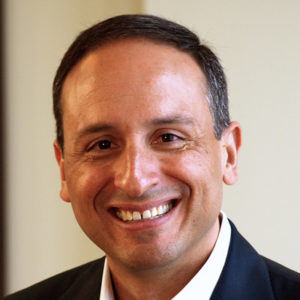
Jim Canales is president and CEO of The James Irvine Foundation. Since his appointment in 2003, the Foundation has taken a more targeted approach in its grantmaking programs, focusing its resources in three areas – Arts, California Democracy, and Youth. In 2010, Canales was appointed to the newly created White House Council for Community Solutions. He also serves on the boards of Stanford University, the Monterey Bay Aquarium, and the College Access Foundation of California. Cynthia Massarsky spoke with Jim after his keynote at the Social Impact Exchange Conference in June about his call to philanthropy to “step up” in the face of failure and risk.
Jim, you gave a great keynote last month at the Social Impact Exchange’s Annual Conference on Scaling Impact – and made the bold statement that philanthropy is underperforming. You quoted the cartoon charter Pogo who said, “We have met the enemy and he is us!” What did you mean by that?
I wanted to suggest that as we consider why philanthropy is underperforming, we need to look first at ourselves. I do think that we can be our own worst enemy. Our intentions are certainly good, but how we do our work can often inhibit our ability to have impact, and that’s what I wanted to explore at the Social Impact Exchange’s annual conference.
If philanthropy is underperforming, then what do you think is limiting our ability to have greater impact?
In my experience, there are three factors that can either amplify our impact or inhibit our ability to be successful: (1) the approach we take to assessing impact; (2) the culture of our organizations; and (3) the ways in which we exercise our leadership.
What needs to change with respect to the approach foundations and other grantmakers take to assessing impact?
We sometimes take a pretty narrow approach to how we think about assessing impact. Many of us use logic models and theories of change, which are worthy tools, but they can lead to a rather static view and might sometimes not accommodate the ongoing changes in the environment in which we operate. I believe the most efficient and effective way to increase impact is to embrace adaptability – to broaden our outlook from a one-dimensional view to a multi-dimensional perspective, from only considering individual goals to moving toward shared goals, in order to achieve better coordination across sectors. In addition, it would help if we focus more on contribution rather than attribution. That is, instead of looking for a direct line from our foundation’s investment to the impact we seek in a quest for attribution, we should be more focused on how our investments make a contribution, along with those of others, toward that impact. We should focus on what we can do collectively and collaboratively to create the change we seek.
Can you talk a little more about the power of collaboration?
If you look at the Latin root of the word, it’s Col (together) and Laborore (work). Collaboration is about work, and I would submit it’s really about hard work when done well. But it also is a powerfully effective strategy. And I would say collaboration is more important for philanthropy today than ever before, particularly given the pace of change that is around us, the complexities of the problems we aim to address, and the need for various actors to come together. But to be clear, we need to remember that collaboration is a means to an end – and the end is about impact.
How would you characterize the culture of a typical grantmaking foundation and in what ways does that need to change?
If we take a hard look at the culture of our institutions, I wonder if philanthropy is, at times, too risk averse. As grantmakers we try very hard to control and manage risk so that we have as much certainty as possible. What I would suggest is that we should learn to tolerate ambiguity, and move from controlling any risk that arises to actually embracing it. In so doing, we need to be ok with the failure that might result. And most importantly, we need to learn how to share what we are learning from those failures. The best organizations in this volatile environment will be those that have the ability to adapt, and that includes adapting to taking more risk and being comfortable with the results of such risk-taking.
How does leadership fit into the equation? What can you say about ways to improve in that regard?
It’s important to give thought to how we exercise leadership as foundations. Given the environment I described earlier, I believe that leadership in our sector needs to be more about team building and less about behaving as a solitary leader who is more concerned about advancing a particular vision or creating a legacy. On a broader scale, it’s about participating in collaborative activities and fostering relationships across sectors. And it’s also about placing a premium on humility – listening more than talking, using your power in service to others and sharing credit broadly with others. Humility must be a shared value that we embrace and uphold in our approach to collaboration.